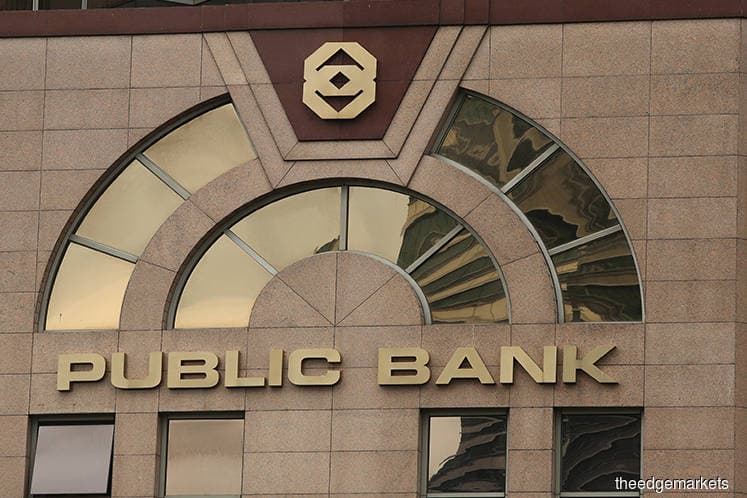
This article first appeared in The Edge Financial Daily on June 22, 2018
Public Bank Bhd
(June 21, RM22.62)
Maintain buy with a lower target price (TP) of RM25.80: Foreign investors have reportedly been reducing their exposure to Malaysian stocks for several straight weeks. Most banking stocks were also subjected to foreign selling pressures. Likewise, Public Bank Bhd saw some softening in its foreign shareholding level although we note that the level of attrition was not as severe as the selldown experienced by some of its peers. Rising to an all-time high of around 39.5% in March 2018, the foreign shareholding level has only eased to around 39.1% (based on latest May data) since the 14th general election (GE14).
We believe the strength in Public Bank’s foreign shareholding levels reflects confidence in the stock’s defensive qualities. Amid rising global volatilities and uncertainties in the domestic market, Public Bank’s fundamentals remain sound. Boasting healthy asset quality (with a gross impaired loan ratio of 0.5% versus industry’s 1.6%) and modest earnings growth prospects (of around 8%), we predict respectable return on equity (ROE) of around 15% for financial year 2018 (FY18) to FY20. Despite the implementation of MFRS 9, management foresees stable asset quality as the total credit charge for Public Bank is guided to be maintained below 15 basis points (bps).
Among others, our 8% earnings growth forecast is premised on a loan growth projection of 5% coupled with stable net interest margin (NIM) of +2bps year-on-year (y-o-y). We believe the recent zero-rating of the goods and services tax (GST) will provide some uplift to consumer sentiments. We believe the auto segment would benefit most from this short tax holiday due to attractive savings from not having to pay GST. Commanding around 28.5% in market share and given its sizeable exposure of 16% to hire purchase to a total loan portfolio of RM306.8 billion, we believe Public Bank could benefit from this spurt in consumer confidence.
Muting potential gains from the pickup in loans are risks from margin compression. Despite the increase in the OPR earlier in the year, we do foresee margin pressures coming from certain segments of the loan market such as residential mortgages as well as in the deposit space. Here, we note that Public Bank has a market share of around 20% in the housing loan space. Given its sizeable exposure of 36% to residential mortgages to total loans, we do foresee some potential downside risk to NIM. Also posing some risk to NIM is the hire purchase (HP) portfolio as Public Bank recently launched a campaign to attract new car buyers rushing to take advantage of the zero-rated GST. As such, we foresee the HP segment to be subjected to some pricing pressure in the third quarter of calendar year 2018.
According to management, confidence, especially among the small and medium entreprises (SMEs), has improved post GE14. SMEs could benefit from this zero-rating of GST as cash flows and process flows improve. SME retailers could also gain from better sales due to the uplift in consumer sentiments coupled with the Hari Raya celebrations. Nevertheless, we do not expect better sentiments to immediately translate into a surge in demand for loans for investment purposes, or business activities as businesses and investors await more clarity on policy and procedures from the new government.
We are more sanguine about Public Bank’s growth prospects in FY19 and FY20, where we project net profit to improve by 8.6% and 9.1% y-o-y. Our forecasts are premised on assumptions of stronger loan growth of 7% and 9%, healthier fee and forex income growth of around 10% along with management’s ability to keep credit charge and overhead expenses in check.
We make no change to our earnings estimates, for now. We maintain a favourable view on Public Bank due to: i) the bank’s lead in loan growth and ROE; ii) operating efficiency (based on cost to income ratio and profit before tax per employee); iii) beneficiary of a pickup in consumer and SME activities; and iv) resilient asset quality. We foresee the bank to likely maintain its current dividend payout ratio of around 43% as Public Bank strengthens its capital position ahead of additional counter-cyclical buffers and domestic systemically important bank buffer, which are yet to be introduced by Bank Negara Malaysia. To recap, Public Bank Common Equity Tier 1 capital ratio and total capital ratio stood at 12.2% and 15.8%, slightly below the sector’s 13.2% and 17.5% respectively.
However, given the increased market volatilities due to global trade tensions and rising interest rates concerns, we readjust our assumption on market risk premium for our Gordon Growth Valuation Model to 5.5%. Based on forward FY19 earnings, we tweak Public Bank’s TP to RM25.80 from RM29.50. This values the stock at an implied FY19 estimate price-to-book value of 2.2 times. We reiterate our “buy” recommendation. — TA Securities Research, June 21